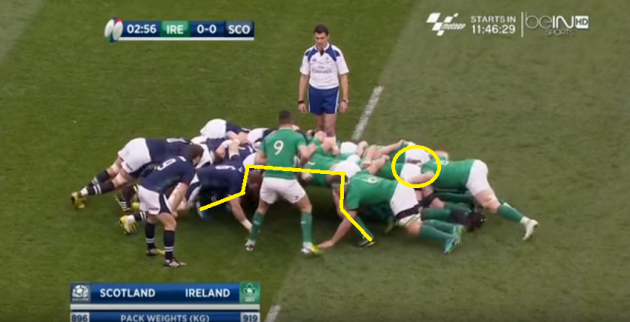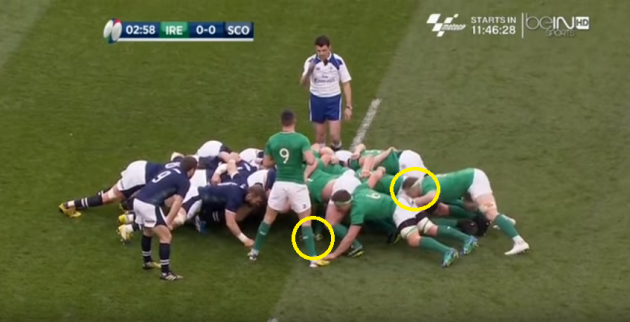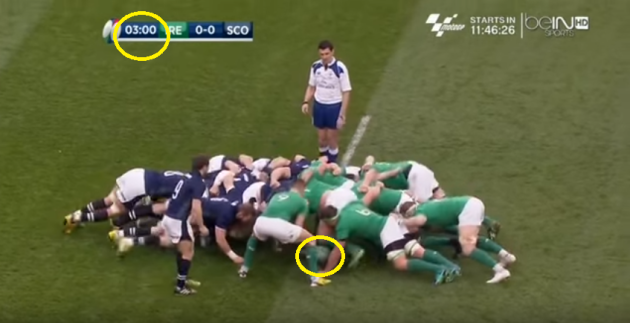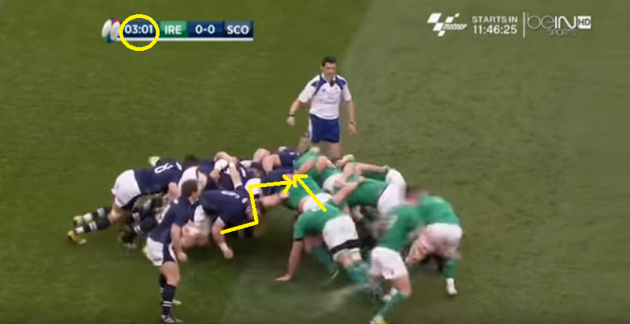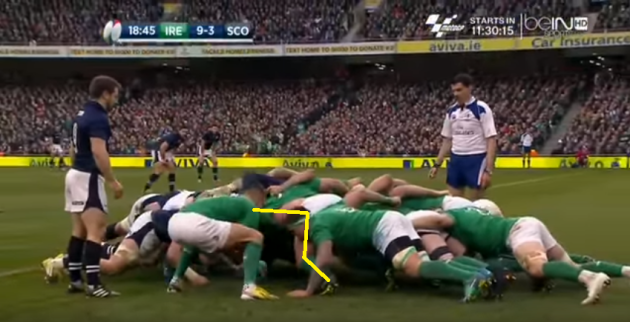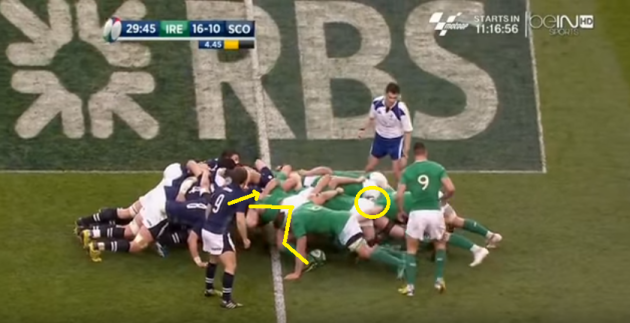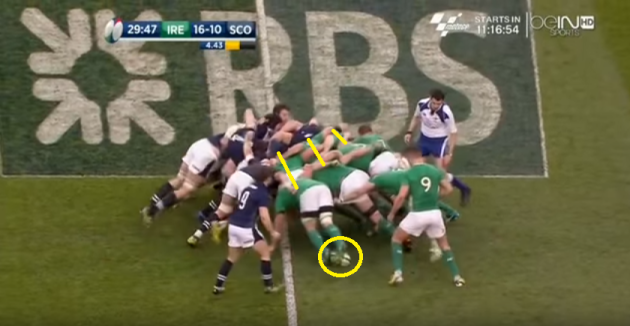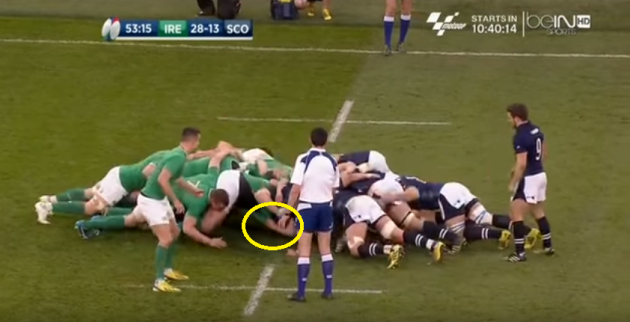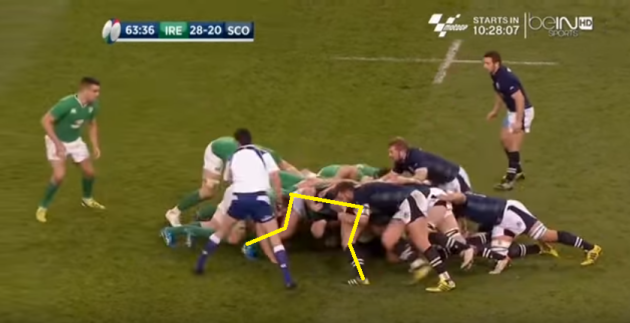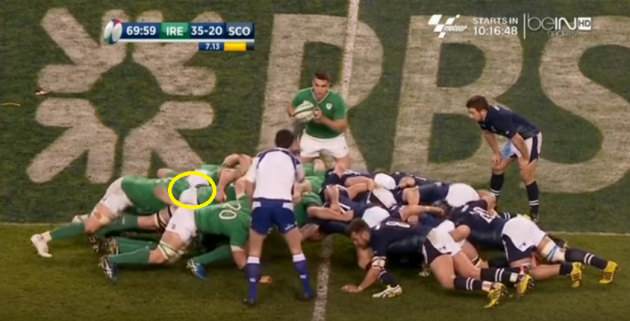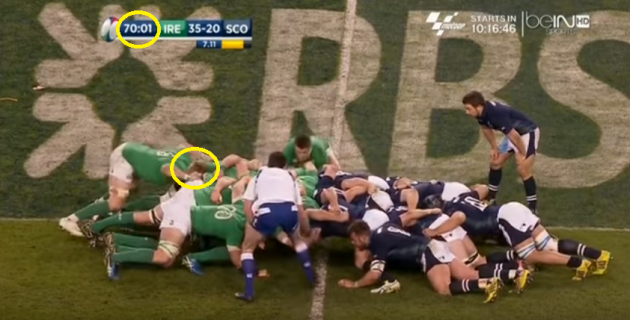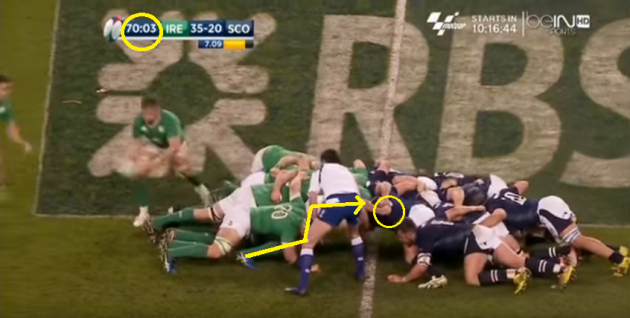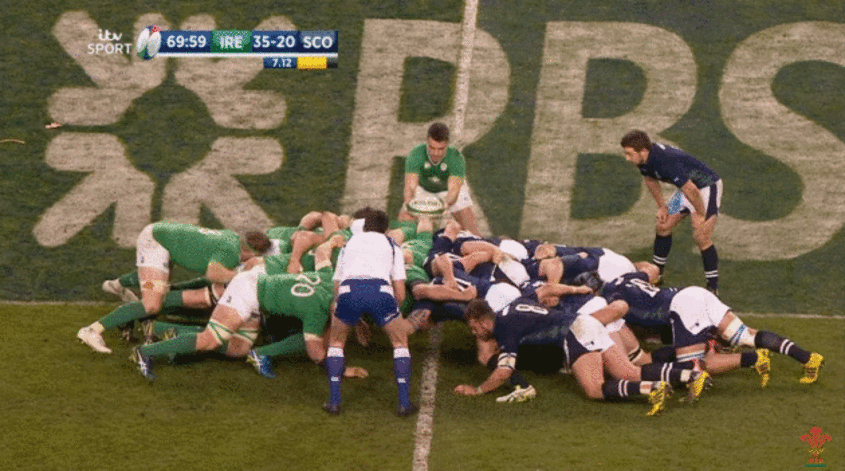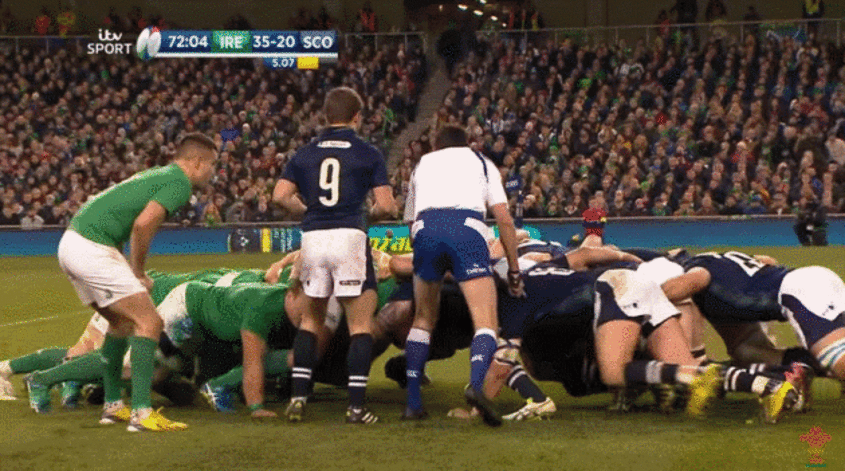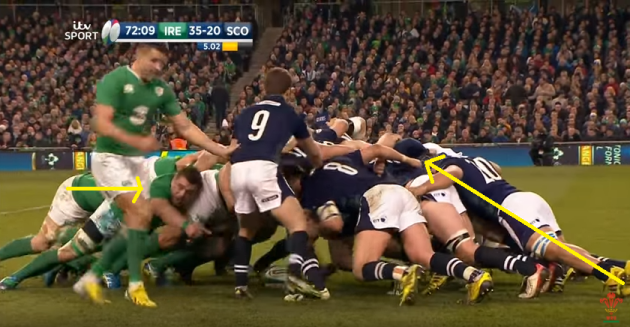TOO OFTEN, I find myself tearing my remaining hair out watching the scrums in test matches. One side is cheating, while the other is counter-cheating. The referee is guessing, and the powers that be are ignoring.
On Saturday at the Aviva Stadium, we were given a proper contest. Bar a few dodgy feeds, it was the most honest scrum battle I can remember seeing in a long time. Both sets of front rows pretty much drove straight and square, concentrated on retaining possession, and using the scrum as a platform to attack.
There were standout performers. Jack McGrath and WP Nel found themselves named in a vast majority of Six Nations Teams of the Tournament, and neither gave an inch to each other on Saturday. Mike Ross held the previously destructive Alasdair Dickinson to a quiet game, while off the bench, Nathn White put in his most assured and confident Irish display yet.
Jamie Heaslip was also outstanding, not just around the pitch, but at the base of the scrum. After Scotland decimated the French scrum in round four, we were all expecting a long, hard battle on Saturday, but Ireland were shrewd and canny. Knowing Scotland thrived on prolonged scrums and driving over the ball, Ireland made sure their ball was in and out with little fuss. Rather than beating their chest and playing to the Scottish strength, they delivered fast ball and allowed the backline to use it.
The very first scrum of the day showed us exactly what Ireland were planning to do. If we look below, we can see how they sides set up. Jack McGrath has a perfect body position; flat back and a nice bend in the knees.
But the man to watch here is Jamie Heaslip. We can see below that he’s in his usual position in between the two second rows.
However, once Pascal Gauzere gives Conor Murray the signal to feed the ball, Heaslip shifts to the left, positioning himself in between CJ Stander and Donnacha Ryan.
We can also see how Rory Best has brought his right foot forward in anticipation of the ball being fed. It’s illegal to do this, but as we all know, the scrum feed has moved so far down on the referee’s list of priorities.
With Best’s foot up and ready, and Heaslip slotting between the second row and flanker, Ireland are preparing for a fast channel one ball, clearly wary of how destructive the Scots can be.
When Murray feeds the ball, the clock reads 3:00 exactly…
And when Heaslip brings it out, we’re on 3:01…
Having timed it on a stopwatch, the ball spent just 1.2 seconds in the scrum. No hanging about.
Much of the speed was down to Best being able to almost pre-hook the ball by getting his foot up. However, on the second scrum of the day, that option wasn’t there.
Scotland have become clever operators in the last 12 months, and for the second drive of the day, the made sure they brought the scrum as low as possible, ensuring that Best wouldn’t be able to lift his leg up without risking a collapse.
We can see below just how low they’ve brought it, barely two feet above pitch level. However, McGrath is once again excellent, keeping his 90 degree bend at the hips, and 120 degree at the knees, ensuring stability for Ireland to retain possession.
After two solid, safe retentions, Ireland tried to attack Scotland on the third scrum. John Barclay was in the bin, and the Scots decided not to bring a winger in to cover, meaning it was 8 v 7 in favour of Ireland.
Again, McGrath is textbook, and we can see that as the pressure comes on, WP Nel gets slowly turned inside. However, we can also see that Heaslip is putting everything into the drive at number eight, with the Scots without a player at the back of their pack.
With Heaslip putting so much into the drive, and the ball in danger of slipping out the side of the scrum, CJ Stander shows some excellent footballing skills.
The scrum is already starting to cave in on his side, with the ball in danger of popping out. But despite all the momentum falling inside, he’s able help drive Jack McGrath, and keep the ball safely in the scrum.
In the end Ireland were awarded a penalty, but Stander wasn’t to know.
While retaining their own ball was key, dealing with an attacking Scottish scrum was even more crucial.
By keeping errors to a minimum, we’d played more than 50 minutes of the game by the time Scotland actually had the put in to a scrum, and when they did, Mike Ross was solid as a rock.
As we saw from Jack McGrath in the first half, Ross nailed the fundamentals, with a good body position from the outset.
Dickinson isn’t able to budge Ross and the scrum eventually collapses , but it looked like an accidental collapse rather than any player getting beaten.
We can see how Dickinson is bound on the jersey of Ross in the picture above, and eventually, Ross’ jersey simply stretches too far, and Dickinson falls. Penalising either player in this instance would be incredibly harsh, and with the ball available at the back, Gauzere tells Laidlaw to play on.
When Nathan White replaced Ross, he picked up where the Leinster man left off, and provided a consistently solid platform for ball retention.
Alasdair Dickinson took apart Rabah Slimani in Murrayfield last time out, but he couldn’t disrupt White here, who perched himself on a solid base, and allowed more quick ball to the Irish backline.
Below we can see how his footwork is spot on, with his front studs only touching the pitch, while he has a nice long bind on Dickinson, keeping the scrum up.
Again, quick ball is crucial. The clock is at 63:33 when it’s fed, and in just four seconds Conor Murray will be attacking.
Dickinson really has a go at White, but he can’t be moved, sticking to the basics.
And by 63:37, Murray is away.
The speed at which Ireland were getting the ball in and out was impressive, and shortly after, they needed just 1.5 seconds to go from put-in to attack. Similarly to the opening scrum of the day, Jamie Heaslip is the man to watch.
If we look at the initial shot, we can see how Heaslip is positioned between the second rows.
But just as Murray gets ready to feed, we can see him shift across in between CJ Stander and Ultan Dillane.
The clock on the screen reads 70:01…
One and a half seconds later, Murray has his hands on the ball again. Also, the stability of the front row is key, with great technique and a fine long bind from Nathan White.
If we watch is back in full, we can really appreciate the speed of the restart, and the quick adjustment from Heaslip to slot into the near channel.
Of the game’s nine scrums, Scotland only got to put the ball into two of them, the second of which they made a right mess of.
Scotland’s tactic is generally not to strike the ball when Laidlaw puts it in, instead stepping over it.
Like most scrum-halves, Laidlaw will keep the ball on his pack’s side of the scrum, but when this one was put in straight down the middle, and the Scottish pack couldn’t walk over it, he panicked, trying to kick it back in, which Conor Murray wasn’t too pleased with.
However, a big drive from Cian Healy on Moray Low caused Scotland to go backwards and Ireland turned over the ball.
It’s worth looking at the differences between Jamie Heaslip and his opposite number Josh Strauss in this scrum.
On the left we can see Heaslip driving from the back, furiously powering his legs, and remaining low to the ground, while Strauss is offering no support to the second rows, locking his body out, and making little to no impact on the drive.
After a difficult campaign, it was nice to see Ireland bring their best scrummaging performance to the Aviva on the final day.
It wasn’t the most powerful and destructive of displays, but it was as effective as any they produced in 2015, when the scrum was a weapon for Ireland.
Even when faced with a more destructive opponent, Ireland boxed clever, relying on simple, clean ball, and refusing to engage the Scots in a battle.
Only three months to go until South Africa, where our depth at tighthead will be seriously tested by The Beast.
‘I went into Leinster on a 6-week trial and would have been happy just to get free gear’
Can Ireland beat the All Blacks? ‘I can’t see it coming any time soon,’ says Saili
